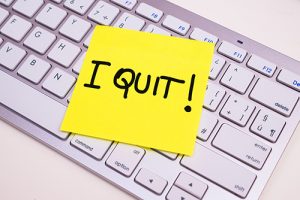Part of the What Do You Know About That series
by Ruth Orr
 WORLD — Show of hands everyone, who here has a daily drug habit? Come on now, don’t be shy. I’m betting it’s a majority of you. That’s a fairly safe bet actually, since statistics show that seven in ten Americans consume a drug at least once a week, and 63% of us have it every single day. Despite Colorado’s (and now New Mexico’s) recent laws regarding the legalization of recreational cannabis, that’s not actually the drug I’m talking about. Though if you’re intaking that on the daily too that’s your own business, I’m actually talking about that oh-so-delightful, sometimes completely necessary morning companion drug: caffeine.
WORLD — Show of hands everyone, who here has a daily drug habit? Come on now, don’t be shy. I’m betting it’s a majority of you. That’s a fairly safe bet actually, since statistics show that seven in ten Americans consume a drug at least once a week, and 63% of us have it every single day. Despite Colorado’s (and now New Mexico’s) recent laws regarding the legalization of recreational cannabis, that’s not actually the drug I’m talking about. Though if you’re intaking that on the daily too that’s your own business, I’m actually talking about that oh-so-delightful, sometimes completely necessary morning companion drug: caffeine.
Specifically though, I’m talking about coffee. Which ironically, I do not drink, leaving me out of the very statistical class I was talking about earlier.
Coffee itself isn’t the drug, it’s just the vehicle for it. Sort of? This metaphor is getting away from me a bit. The point is, the coffee plant contains as one of its components caffeine, and because of that, we as a species are obsessed with a random African shrub.
If you’re a long-time reader of this column, you probably know where we’re going next. That’s right baby, grab your gardening gloves, it’s time to go digging around to find the roots of the coffee plant, and the caffeine that fuels us.
The trick is, figuring out the origins of caffeine and coffee isn’t quite the same process, because coffee isn’t the only plant that contains caffeine. Let’s do a quick chemistry class on the drug first, to get that bit out of the way, before we dive into a steaming cup of historical joe.
I keep calling caffeine a drug, which I suspect is something most people who consume it regularly don’t really think about. It’s just something that you ingest that alters your brain’s effectiveness and therefore your behavior and mood! It keeps you awake when you haven’t had sleep, it makes you happy. Some folks swear they can’t even function without it. You just have to be careful not to take too much or you get anxious and feel sick. Wait…
Caffeine is actually a central nervous system stimulant, belonging to the methylxanthine class. Used as a wakefulness promoter or mild cognitive enhancer, caffeine works by slotting itself into your brain’s adenosine receptors. For those of you who should’ve had more caffeine in high school and fell asleep during biology, adenosine is one of your body’s natural sleep-inducing molecules.
Without getting too deep into the nitty gritty, because frankly I’m scared I’ll say something wrong and my own high school science teacher will call me out on it (hi, Ms. Kasper!) the basics are that as you burn energy just by existing, adenosine gets released. Your brain’s neurons have little receptors shaped perfectly to slot adenosine in, and once the adenosine is locked in place, it causes your neurons to fire more slowly, making you tired. Caffeine mimics the shape of the adenosine molecules, and if it gets to your neurons first, it takes the adenosine’s parking spots, so your neurons don’t get the “slow-down, bro” message.
Adenosine receptors are also sometimes paired with dopamine (the feel-good hormone) receptors, but when adenosine docks its massive SUV in, it squishes the dopamine receptor, making the parking spot too small for dopamine molecules to squeeze into. Caffeine however, drives a compact car, so when C steals A’s parking spot, D can still fit into its own space, and your body gets an extra flood of the happy-juice. Yay!
So here’s the real question. Why on earth did plants ever bother to evolve a chemical compound that makes us feel awake and happy? Turns out, that’s actually just an unfortunate side-effect for the poor plants. They were actually targeting bugs.
You know how if you have too much caffeine, you get jittery and your heart speeds up and you feel kinda like you might die if you keep drinking caffeine? It has the same effect on insects, but they’re a lot smaller than us. If they do ingest too much caffeine, their tiny little bug hearts explode. It’s a natural pesticide.
On the plus side, some of the plants evolved in plants to be toxic to plants but when consumed in lower doses, the drug can boost a pollinating bug the same way it boosts us, keeping the insect going faster and stronger and making it more likely to revisit the plant later. It just has to make sure it’s getting the slightly buzzed pollen instead of the toxic leaves.
Okay, you guys still with me? That was kind of a lot of chemistry to dump on you. The point is, coffee is one of a handful of plants that developed caffeine to kill bad bugs attacking its leaves and accidentally invented a substance that is the most widely consumed drug in the world as a side effect.
But where did coffee come from? Well, once upon a time, there was nothing, and then there was a Big Bang, and suddenly there was stuff. But we can skip over most of the bits that happened after that, because it took a few billion years for everything to order itself out. It’s not until 465 million years ago that the first land plants even showed up. For the sake of brevity, we’re gonna breeze through another several million years, all the way to the Eocene Epoch, which began 56 million years ago. That is when we first see plants belonging to the Rubiaceae family, a family which coffee, in the inventively named genus Coffea, belongs to.
There are actually a whole bunch of coffee cousins, with 124 varieties of coffea alone, but the two we care most about are Coffea arabica and Coffea robusta. Coffea arabica probably sounds pretty familiar to those of you who do drink the stuff, since it makes up 75% of all the world’s coffee drinks today. The top 25% of that is what counts as the gourmet luxury beans. Coffea robusta is the cheaper stuff, and can be found in stuff like powdered instant coffee.
So we could try to trace the plant through the ages until we get what we’ve got today, but frankly that is more fun with animals than plants (in my biased opinion) so we’re going to instead look at when we first found coffee.
Legend has it that a goat farmer named Kaldi, who lived in Ethiopia around 850 CE, came across his goats hanging around a bush with red berries. They’d eat the berries, and then go whacko, bouncing off the metaphorical walls. Kaldi decided he wanted in on that, and nibbled the fruit himself. He was so pumped about it that he promptly brought a bunch of berries to the local temple, but the head monk decided they were devil fruit and chucked ‘em into a fire, thus creating the first roasted beans. Folks, including the monk, were very much enjoying that, so he ordered the embers pulled from the fire and water poured over the remains. For some reason everyone then decided it would be a good idea to drink the resulting hot ashy bean water, and they all got their first dose of caffeine, feeling happy and alert and able to stay awake and at prayers for even longer. Not the devil juice after all, a gift from on high! This bean had to be shared.
This is probably not exactly how things went down with the discovery of coffee, but it is an awesome story. What we do know is that by 1500, coffee from Yemen was being exported around the world.
It took a strong foothold in the Middle East, spread from Ethiopia to Yemen and then on from there. It was often used as a spiritual intoxication to make the drinker feel closer to God, helping them stay awake through the night to keep offering up prayers. Coffee houses opened up in Syria and Istanbul, the capital of the Ottoman Empire, from where it spread to the rest of Europe during the 16th century. The Republic of Venice in Italy was a thriving hub of trade between North Africa, Egypt, “The East”, and the rest of Europe, and so became a major coffee trader too.
Coffee first came to the Americas in 1720, when a French fellow named Gabriel de Clieu brought seedlings to Martinique in the Caribbean. Turns out that was an excellent growing environment for them, and within 50 years there were nearly 19,000 coffee trees on the island. From there it spread to other colonies, being cultivated across the Caribbean and into mainland Central and South America. Quick note, this was all very bad for the people already living there, who got displaced from their ancestral homelands by white Europeans wanting to make quick cash growing coffee, and who then often enslaved the native people they were displacing to work on the coffee plantations. Oof. For decades Brazil was the leading producer of coffee worldwide, but has begun to lose the crown as other Latin American countries and now Vietnam elbow into the trade. Ethiopia is actually a fairly low producer, though what it does make is quality.
Today, coffee is the most popular beverage in the world (second only to water). Over 2.25 billion cups are consumed each day, 400 million of them in the US. While still more popular in the West, it is growing in popularity in China and Japan. Finnish people drink more coffee per capita than anyone else in the world, perhaps in a bid to stave off the horrors of the long dark polar night. So if you’re one of those folks with a coffee addiction, know you’re not alone. We’re all in this drug-fueled bean juice craze together.




